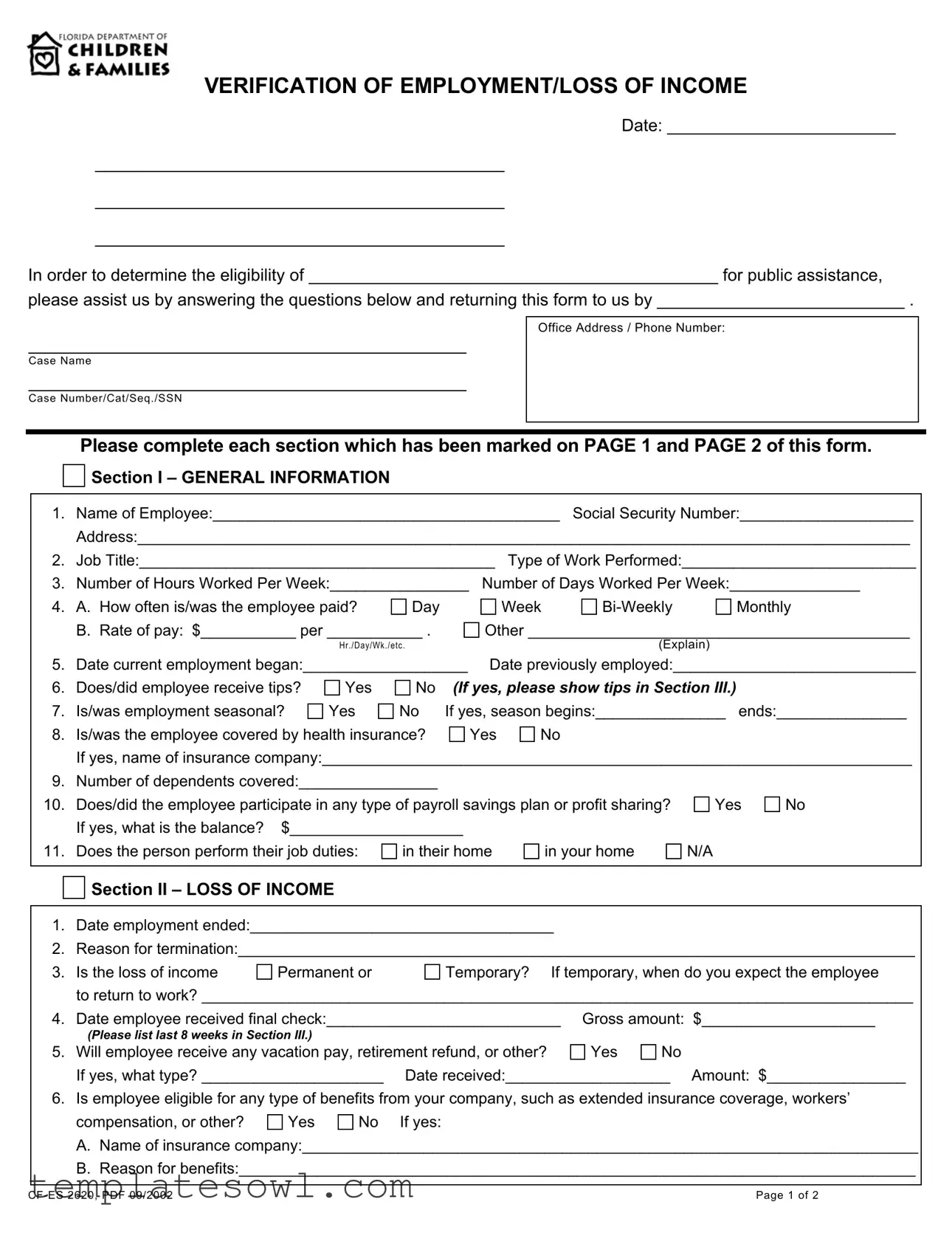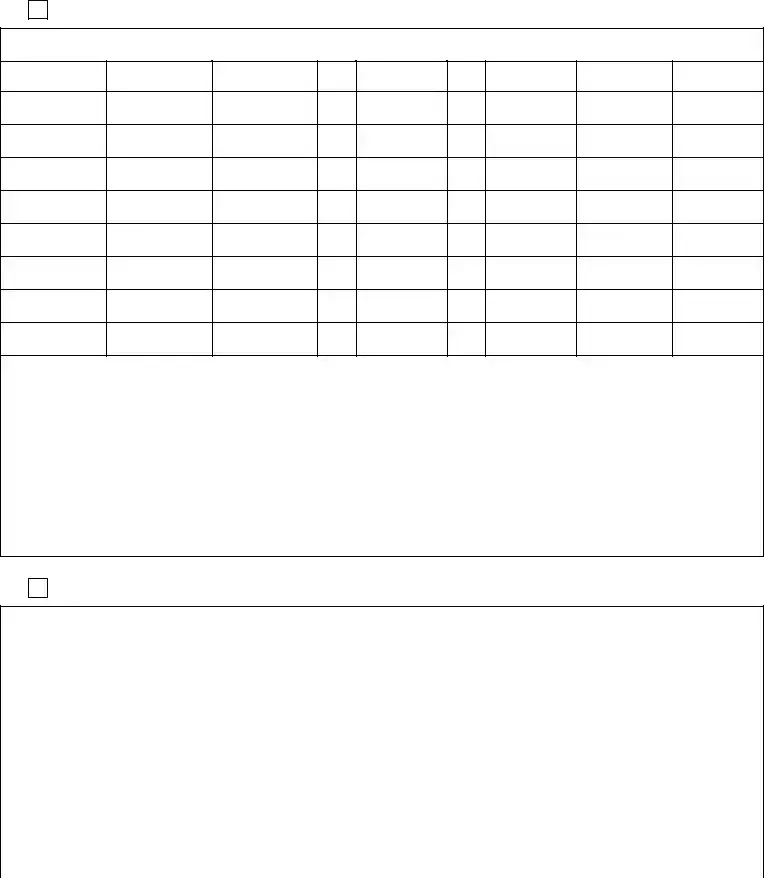What is the Verification of Employment Loss form used for?
The Verification of Employment Loss form is designed to gather essential information about an employee's work history and income. This information helps determine eligibility for public assistance programs. When completed accurately by the employer, the form provides a snapshot of the employee's employment status and income details necessary for the assessment process.
Who needs to fill out this form?
This form must be filled out by the employee's employer or a representative from the employer's human resources department. It is crucial that the person completing the form has access to the employee's work records and income details to ensure accurate information is provided.
What information is required in Section I of the form?
Section I requests general information about the employee, such as their name, Social Security number, job title, type of work performed, and hours worked per week. Additionally, it asks for details about payment frequency, rate of pay, employment dates, and benefits like health insurance and tips received. Completing this section thoroughly is vital for assessing the overall employment situation of the individual.
How does Section II address the loss of income?
Section II focuses specifically on the circumstances surrounding the employee's loss of income. It requires details such as the date employment ended, the reason for termination, and whether the loss of income is permanent or temporary. This section is crucial for understanding how and why the individual is seeking assistance, providing a clearer context for their situation.
What should be included in Section III?
Section III is dedicated to outlining the record of pay received over the last eight weeks of employment. Employers should include gross amounts, pay dates, hours worked, and any overtime or tips earned. If there were variations in hours or pay rates, it's essential to explain the reasons for these changes. This detailed record helps assess the employee's financial situation accurately.
What happens if the information provided is inaccurate or misleading?
Employers must ensure that all information on the form is true and accurate. Providing false information, whether intentional or not, can lead to serious consequences, including prosecution for fraud. It is critical for employers to double-check the information before submitting the form to avoid potential legal repercussions and ensure fair assistance for eligible employees.


